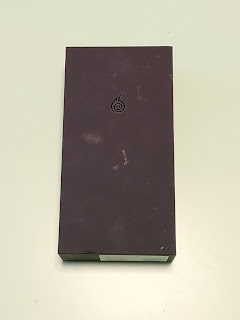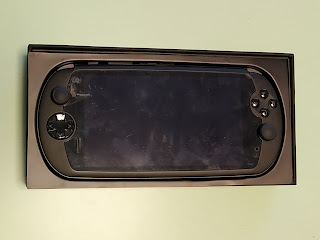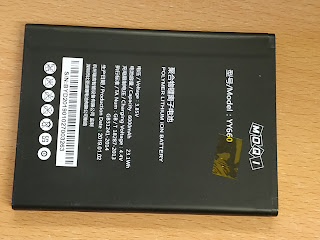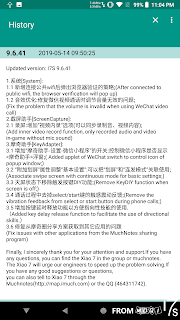[Artículo] Instalación base para Windows
 Por que este artículo?
Por que este artículo?
Este artículo pretende ser un resumen de mi instalación básica en estaciones windows, con mis usos y preferencias particulares, y que en algunos casos también utilizo en máquinas que me piden que "repare".
Ya que tengo un listado provisional que siempre estoy buscando, o intento recordar de memoria, he creído que dejarlo en modo artículo sería mas útil para encontrarlo rápidamente, además de que le podría servir a alguien mas.
En mis instalaciones tengo algunas premisas que basicamente consisten en instalar la menos cantidad de programas innecesarios en el sistema, y que en función de las necesidades o usos que tenga la máquina (el usuario), adaptar el listado de aplicaciones, tweaks, etc.
La isntalación que hago normalmente es de Windows 10 Home edition o Windows 10 Pro, donde a ser posible instalo windows limpio (desde el propio instalador oficial de Windows), y evitando instalar los software companion de cada dispositivo/periférico conectado a la máquina, que en su mayor parte lo único que hacen es agregar servicios innecesarios para obtener la funcionalidad, ya que con los drivers debería ser suficiente.
Además, inetnto utilizar siempre que puedo softwate gratuito y con soporte de la comunidad (código abierto en lo posible), con algunas excepciones (necesarias en mi caso)
Drivers y software companion para dispositivos.
Siempre que pueda, cuando necesito instalar los drivers de un dispositivo en la máquina, busco la manera de instalar los drivers desde el administrador de windows, SIN utilizar el programa que trae el propio dispositivo.
En muchos casos, cuando compramos una tarjeta, periférico, etc, éstos vienen con algún instalador de su software, que además del driver necesario, instalan extras que no son necesarios en muchos casos, como puede ser las tarjetas de sonido, discos duros externos, o software de algunos cascos/auriculares gaming, etc. que lo único que ofrecen es un control sobre funcionalidades accesorias como intensidad de las luces, etc.
Si lo ves necesario, puedes instalarlo, pero si no cumplen una funcionalidad vital, mi recomendación es que solo instales el driver y omitas el resto de software.
 Listado de aplicaciones
Listado de aplicaciones
En mi instalación básica de una máquina con windows, la aplicación básica, y que concentra la mayoría de funciones que utilizo en un ordenador es sin duda:
- Google Chrome
Navegador por defecto que utilizo, ya que tengo muchos servicios asociado a mi cuenta gmail por lo que me compensa tenerlo en la máquina.
Mucha gente prefiere no utilizarlo por que consume muchos recursos, pero esto no es tan cierto, ya que los recursos que consume van directamente relacionado con la cantidad de plugins y extras que le tengamos instalados.
En mi caso, esta es la lista de plugins basicos que utilizo (y que se instalan automáticamente cuando inicio la sesión en chrome)
- Scriptblock para bloquear scripts de páginas (principal entrada de bichos en nuestro navegador)
- Flashcontrol para controlar los sitios que aún utilizan Flash (que son muchos aún)
- uBlockOrigin para controlar los scripts con spam, ventanas emergentes, etc, etc de las páginas. antes utilizaba adBlock, pero consumía demasiados recursos, además de que han salido noticias de que el comprador realmente la utiliza para meter anuncios.
- adBlock para Youtube. No la desarrolla adBlock. Basicamente bloquea anuncios en youtube.
- Facebook Adblocker. Bloquea anuncios en Facebook (menos los anuncios en la reproducción de vídeos)
- Keepa. Aplicación básica para comparar y hacer seguimientos de precios en facebook.
- Passwrod Checkup Verifica en cada sitio que entramos si se ha producido en fallo de seguridad, y nos indica cuando deberíamos cambiar la password en dicho sitio.
- Bitly. Acortador de direcciones web (url shortener)
- Tab Auto Refresh Sirve para auto refrescar pestañas de chrome. En alguna ocasión necesitamos que se refresque alguna cada x segundos de forma automática, y esta extensión lo hace.
- Chrome Remote Desktop. Últimamete se está transformando en mi herramienta básica para tomar el control de otras máquinas.
- MyJDownloader. Es una interfaz para interactuar con la máquina que ejecuta JDownloader. con esto puedo lanzar descargas de forma remota desde cualquier chrome hacia la máquina que ejecuta JDownloader, o controlar el estado de las descargas actuales.
- Clipbrd Beta. Extensión muy útil para compartir el portapapeles entre varios dispositivos (solo texto, hasta 1000 carácteres). Lo uso básicamente para copiar texto entre el móvil y el PC. Hay que instalar el cliente en android.
- Clickbait Remover for Youtube. Quita la imagen de previsualización personalizadas en youtube y las reemplaza por una miniatura real del vídeo.
- uBackList. Estas hasta los heggs que en los resultados te aparezca softtonic, Pinterest y muchos sitios que no aportan nada? con esta extensión puedes bloquearlas para que no te salgan en los resultados de google. Además, la lista se puede sincronizar con los demas dispositivos.
Además también utilizo algunas extensiones de google como documentos, drive, etc.
Estos plugins no los instalo si la máquina no es para mi uso personal, y solo dejo Chrome con uBlockOrigin para que la utilice otra persona.
El resto de aplicaciones básicas son las siguientes:
- 7zip. Herramienta para gestionar ficheros comprimidos. Maneja las extensiones mas comunes como 7z, ZIP, RAR, etc, etc, etc.
- Notepad++: Editor de textos avanzados, que es una herramienta básica a la hora de editar múltiples ficheros de texto.
- VideoLAN VLC: Con este reproductor puedes reproducir virtualmente todo tipo de ficheros multimedia (audio y vídeo) y con esto no necesitas instalar códecs de ningún tipo en Windows
- Winamp 2.24: Reproductor de mp3 muy ligero, popular y funcional. utlizo esta versión y no una mas actualizada, básicamente por que los mas nuevos consumían muchos recursos por los nuevos skins, además que personalmente no utilizo servicios de música por suscripción.
- Synergy. Es una aplicación de pago para controlar varios ordenadores con un solo teclado y ratón.
- Paint dot NET. Es un editor de imágenes. En mi caso, no necesito un Photoshop (que me resulta demasiado complicado y complejo de utilizar), y un Paint de microsoft se queda demasiado básico, por lo que esta aplicación está a medio camino de ambas y me cubre perfectamente mis necesidades a la hora de manipular imágenes.
- JDownloader 2. Gestor de descargas. Para interactuar con las descargas de forma remota, utilizo la extensión My JDownloader
- Deluge. Cliente Torrent. no utilizo uTorrent, desde que incluyeron el sistema de minado de criptomonedas en los PCs clientes, y por tanto tenía un consumo elevado de recursos para minar criptomonedas para la compañía sin tu consentimiento, y me pareció buen momento para buscar alternativa. Actualmente uTorrent tiene otra política para el tema de las criptomonedas, pero como Deluge me funciona sin problemas, no necesito volver a cambiar.
- Teamviewer. Programa para controlar remotamente otras máquinas. En cada sesión te lanza un anuncio para que compres el producto. Si utilizas con mucha frecuencia este producto, te consideran como si fueses una empresa y te banean por un par de días. Este programa tiene como principal funcionalidad para mi el poder activar máquinas mediante WOL/WOW (Wake on LAN / Wake on WAN).
- Chrome Remote Desktop. Programa para controlar remotamente otras máquinas, sin los inconvenientes de que salgan anuncios ni peligro de baneo. Esperando por que activen la función de WOL/WOW para dejar de utilizar teamviewer.
- scrcpy. Es una aplicación con un uso muy específico y es poder controlar la pantalla de nuestro móvil. La utilizo mucho cuando pruebo dispositivos, por que puedo tener la pantalla en uno de mis monitores (como una ventana mas de windows) mientras estoy haciendo mas cosas en los otros monitores.
- Telegram. Cliente Windows de Telegram, aunque también utilizo el cliente web de Telegram si estoy en una máquina que no es mía, utilizando una ventana incognito de chrome.
- Whatsapp. Realmente no utilizo el cliente windows, por que utilizo muy poco esta aplicación, por lo que si me hace falta abro la versión web de Whatsapp y con eso me es suficiente.
- Microsoft Office. Es una suite ofimática de pago, aunque existen versiones gratis y libres de suites ofimáticas (como OpenOffice o LibreOffice), en mi caso prefiero utilizar la versión de m Microsoft. La plataforma Office365 es de suscripción, por lo que no es el tipo de producto que quiera instalar en la máquina (yo quiero un producto, no un servicio)
- Google Backup and Sync. Para gestionar los ficheros de nuestra cuenta Drive.
Diseño y programación
- Ultimaker Cura. Slicer para impresión 3D
- Visual Studio 6 (con esto desarrollo herramientas básicas cuando las necesito en la oficina o casa). Tengo los discos originales del instalador, pero que ya no es compatible con Windows 10, por lo que se necesita de una herramienta extra que me permita preparar el instalador.
- Sketchup 2015. Editor de diseños 3D. Utilizo la versión 2015, por que en algunas máquinas mas antiguas no van los mas nuevos como el Sketchup 2018.
Clientes de bibliotecas de juegos.
como complemento a la faceta "gaming" de la instalación, también instalo:
- Discord. Aplicación para chatear (voz y texto), basicamente cuando estoy jugando online.
- NVidia GEFORCE Experience. En mi caso para la tarjeta NVidia. Ofrece además de los controladores actualizados, la posibilidad de hacer streaming a otros dispositivos mediante Moonlight. Si no tienes una gráfica NVidia compatible, puedes utilizar otras alternativas como Steam, Parsec, Kainy, etc.
Una vez instalados los clientes, hay que quitar del inicio todos aquellos que no queremos que se ejecuten de forma automática. yo normalmente dejo solo el de Steam.
Posiblemente me dejo alguna aplicación ahora mismo, que he escrito esto un poco haciendo uso de memoria (y que no la tengo muy allá que digamos) XD
Y bueno, esta es mas o menos la lista de aplicaciones que suelo instalar en mi PC principal, y en algunos ordenadores que instalo desde cero (ya depende de las funciones y usos, quito algunas de las aplicaciones que he listado)
Si lo miras objetivamente te darás cuenta que realmente no son muchas las aplicaciones. El fuerte se lo lleva la instalación de Chrome y sus extensiones, pero como estas extensiones se instalan de forma automática cuando habilitas la sincronización de chrome con tu cuenta google, entonces no tienes que hacer mucho.
Que opinas de mi lista? tienes mas extensiones de chrome que te resulten interesantes y útiles?
alguna aplicación que creas que debería probar?
Y bueno, esta es mas o menos la lista de aplicaciones que suelo instalar en mi PC principal, y en algunos ordenadores que instalo desde cero (ya depende de las funciones y usos, quito algunas de las aplicaciones que he listado)
Si lo miras objetivamente te darás cuenta que realmente no son muchas las aplicaciones. El fuerte se lo lleva la instalación de Chrome y sus extensiones, pero como estas extensiones se instalan de forma automática cuando habilitas la sincronización de chrome con tu cuenta google, entonces no tienes que hacer mucho.
Que opinas de mi lista? tienes mas extensiones de chrome que te resulten interesantes y útiles?
alguna aplicación que creas que debería probar?
Zalu2!
Deen0X












































































































